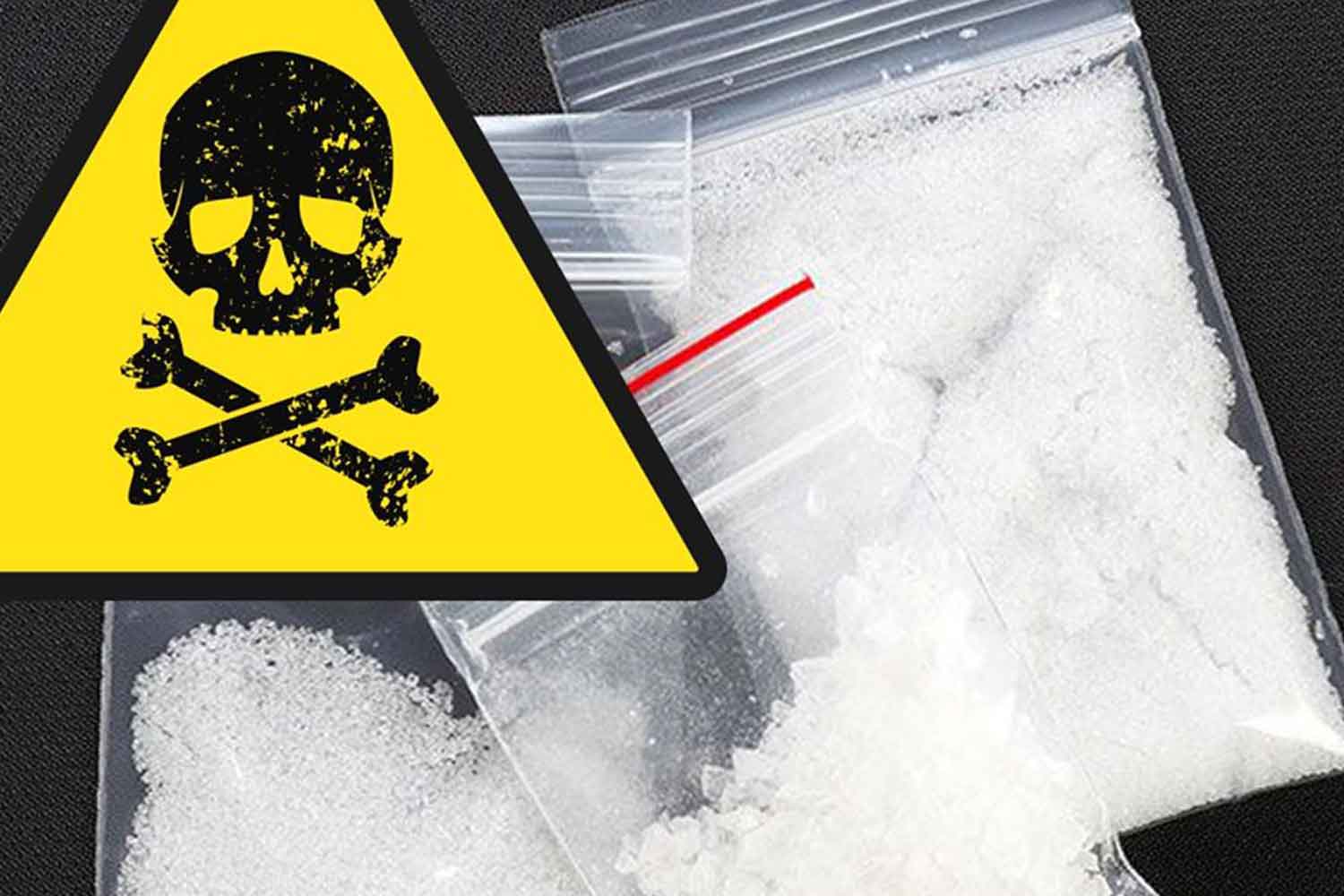What is Isotonitazene?
Iso is a synthetic opioid, meaning it is made in a lab rather than derived from a naturally occurring source like poppies. Scientists first discovered a related compound, etonitazene, in 1957. This was part of an ongoing search for promising new drugs. However, etonitazene was never approved for medical purposes due to its highly addictive nature. Isotonitazene is very close to etonitazene in its chemical structure. While etonitazene is 60 times more potent than morphine, it may be 100 times more potent.
Iso looks like an off-white or yellow powder. Drug dealers cut it into other drugs to increase their potency. They also traffic this drug in pill form. Because it is so potent, even a very tiny dose may have deadly consequences.
Why is Isotonitazene Appearing in the United States Now?
The U.S. has gone through several waves of the opioid epidemic. In 1999, physicians started to prescribe large amounts of opioid painkillers for chronic pain or minor procedures. Drug companies often misrepresented the dangers of addiction from these painkillers, meaning many patients became dependent on the drugs because they misunderstood the side effects. The second wave began in 2010 when drug overdoses related to heroin started to spike. Now, we are in the midst of the third wave, which started in 2013. Synthetic opioids began flooding the U.S. opioid market. Fentanyl, in particular, is often cut into other drugs. It is highly potent and has been driving the spike in overdose deaths.
Fentanyl Production in China
China produces much of the fentanyl in the U.S. market. Chinese laboratories that illegally produce it are located in the city of Wuhan. Some of the production is legitimate for medical purposes, as doctors prescribe fentanyl for cancer pain or surgical recovery. However, much of the fentanyl production in Chinese laboratories occurs without government oversight or authorization. Mexican drug cartels then purchase vast quantities of fentanyl to traffic across the southern U.S. border, where it spreads throughout the country.
Alarmed by the rise of fentanyl-related overdose deaths, the United States federal government has been putting pressure on China to crack down on fentanyl production. In April 2019, China announced that it was banning any unauthorized production of fentanyl or fentanyl derivatives. However, they continued to allow legal production of fentanyl through authorized labs. In response, Chinese chemists decided to branch out. They began manufacturing other compounds with different chemical structures.
Iso is one of these new compounds. In fact, it is so new to hit U.S. markets that states and the federal government have not yet regulated its sale. That means that it is still legal to purchase iso. Ohio issued a notice in May 2020 that it would classify iso as a Schedule I substance, and other states will likely follow suit. Because chemists can make tiny changes to a substance’s chemical structure to make it a “new” compound, they continue to exploit this loophole to create new, legal opioids like iso.
The Scope of the Iso Problem
Iso is still new to the U.S. drug market. Many local law enforcement agents have not heard of it. Very few drug users know about it, either. That makes it particularly dangerous, as dealers may lace their drugs with iso without their clients’ knowledge—the people using drugs then accidentally overdose due to the very potent drugs. Indeed, the first iso-related deaths in the U.S. happened in Illinois and Indiana. Several people used cocaine that had been laced with iso without their knowledge.
It is challenging to know the scope of the iso problem. One reason for this is that toxicology reports do not routinely test for iso. That means that additional people may have overdosed due to iso, but the overdose was linked to fentanyl or heroin instead. Toxicology labs vary on a county by county basis, meaning it can be tough to make a coordinated effort to test for iso. As the drug continues to spread across the country, accurate lab tests will become increasingly important.
From the information that we do have thus far, deaths due to iso appear to be increasing. In summer 2019, there were an estimated six overdose deaths due to iso each month. Thus far, in summer 2020, that number is at 50 to 60 deaths per month. That’s a nearly 10-fold increase in overdose deaths over one year. And again, that number may be an underestimate due to limited testing.
Public Health
Public health experts are also worried about iso due to the ongoing COVID-19 pandemic. While information about COVID-19 is evolving, it appears that people who chronically use opioids may be at higher risk. Opiates are central nervous system depressants, meaning that they cause the breathing rate to slow. Chronic opioid use may negatively impact lung health. That means that a person dependent on opioids who gets infected with COVID-19 may be more likely to develop complications—adding iso to the mix may be even more deadly. However, there is not enough data yet to confirm this.
The COVID-19 pandemic has also led to a spike in overall opioid overdose deaths. The precise reasons for this are unknown, but it appears to be related to an increase in untreated mental health problems. Depression, anxiety, isolation, job loss, and financial insecurity have created an enormous mental health burden for Americans. Opioids offer a short-term coping strategy to numb emotional pain and alleviate stress. Unfortunately, they create a long-term issue of drug dependence and addiction. One possible reason for iso-related overdoses is that former drug users, placed under mental health pressure, return to opioid use. They may use their former dose of drugs, which is more potent than intended. Or, they may use drugs that have been cut with iso without their knowledge. Either way, the outcome may be deadly.
What to do About the Iso Problem
Iso is just one synthetic opioid among many, and there will likely be new dangerous opioids in the future. One part of the solution is to make it easier for the Drug Enforcement Agency to add new synthetic opioids to Schedule I drugs, which are tightly regulated. This allows law enforcement agencies to prosecute large-scale drug distributors better. Adding isotonitazene to toxicology tests is another step to understanding the extent of the problem better. However, these problems do not address the immediate issue of people being given deadly iso now.
A large part of the public health response to the opioid epidemic has been to increase the overdose reversal drug Narcan distribution. Narcan is an opioid agonist, meaning it binds to opioid receptors. It has such a high affinity (tightness of binding) for opioid receptors that it knocks existing opioids off of them. This can “reverse” an overdose while it is happening. First responders routinely carry Narcan, and family members of people struggling with opioid addiction often do, too. Unfortunately, Narcan can only reverse an overdose in progress. It does nothing to prevent overdoses or reduce the number of people struggling with addiction. Plus, police warn that it may take several doses of Narcan to work in iso overdose cases. Iso is so powerful that even Narcan may not be able to reverse an overdose in progress fully.
Treatment and Prevention
What we need is a comprehensive approach to dealing with the opioid epidemic. Too many strategies focus only on reducing the risk of overdose. We need to focus on the prevention and treatment of people struggling with addiction. For example, medication-assisted treatment programs given drugs like suboxone or methadone to patients. While these drugs reduce cravings and prevent the euphoric high of using opioids, they do so because they themselves are opioid medications. Some people believe that medication-assisted treatment replaces one drug addiction with another.
A smarter strategy is to provide medically-assisted detoxification. Medically-assisted detox programs like the Waismann Method® allow people to detox in an accredited hospital privately and comfortably under the supervision of a medical team and specialists. During the detoxification process, medical support is safer, much more successful, and less painful than allowing people to go “cold turkey” or detox in non-medical facilities.
After a brief hospital stay, patients enter a supportive recovery care environment. This will enable people to regain physical and emotional strength to enter a life free from opioid abuse. This recovery period is critical to address the underlying problems driving addictive behavior. Only by treating depression, anxiety, trauma, and other mental health problems will people get the relief they need. Increased access to medical detox needs to be a primary part of the solution to the opioid crisis. Without high-quality treatment programs, patients will continue to suffer and be vulnerable to overdoses from iso and other synthetic opioids.














